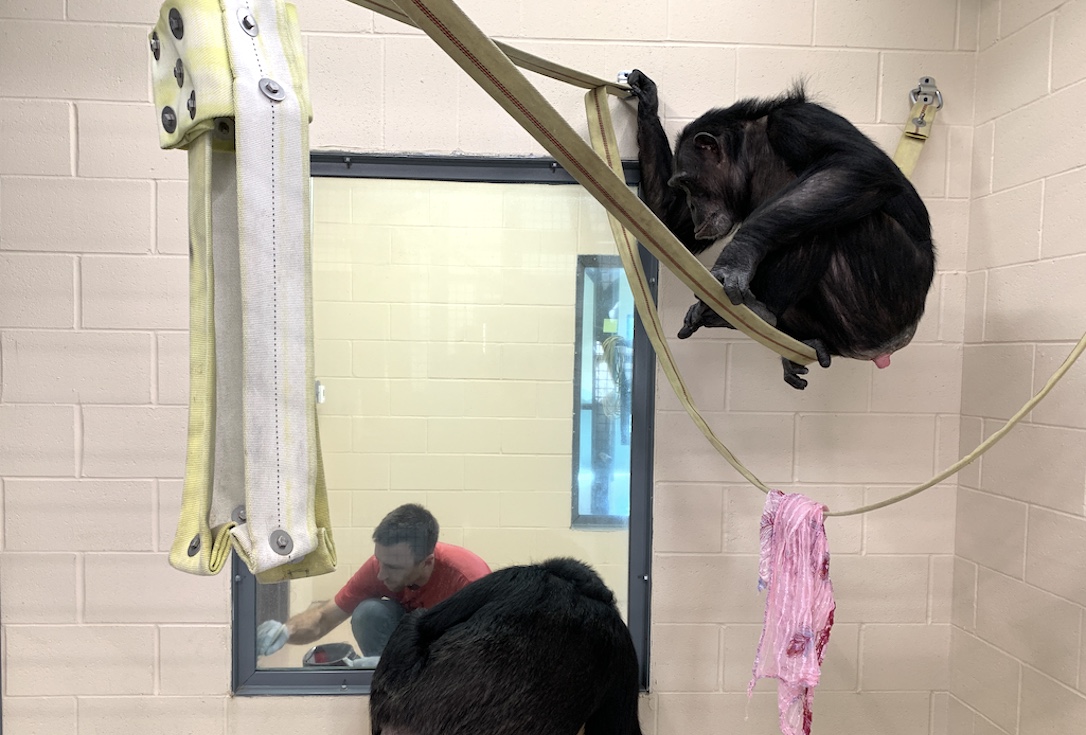Raise your hand if you like to do puzzles.
There are lots of different kinds – jigsaw puzzles, word puzzles, logic puzzles, math puzzles, etc, etc. Remember the Rubik’s Cube fad? Or perhaps you are mechanically-minded and like to figure out how things come apart and go back together. Maybe you’re more of a physical person and you like to do actual obstacle courses. Video games are really electronic puzzles, and we know how popular those are.
There was an increase in humans doing puzzles this last year during the pandemic and lockdowns. I’ve read a few articles about why we humans like to puzzle, and the explanations generally include things like: puzzles provide us with a sense of control, and when we solve a puzzle our biology rewards us with a chemical hit of dopamine. There’s some intriguing research showing there’s more than just a dopamine surge going on in our brains when we we are working on puzzles.
We, as primates, are hardwired to solve problems. We often do it all day long, and even choose to do it in our leisure time.
Why am I talking about this?
At the sanctuary, we provide the chimpanzees with food puzzles. A few of them have been featured in recent videos, like Honey B and Willy B acing Anna’s inspired Slinky Madness puzzle and the video that J.B. shared last week of Honey B fishing out a peanut from a boomer ball puzzle.
On both of those video posts on social media, there were a couple of comments that questioned whether the chimpanzees were being led to frustration with these puzzles. There was even the notion that the puzzles were cruel.
A long-time blog follower, Dan Oksiuta, responded wonderfully to one such comment by saying, “While the puzzles & caging may appear unnecessarily frustrating, it is reasonable to assume they experience the same emotions of accomplishment & satisfaction as humans completing a difficult task. Treats probably taste better, too.”
Thank you for that, Dan!
The food that we include in food puzzles is a really minuscule amount, and it’s outside of their regular meals, so they aren’t choosing to solve puzzles out of hunger. They have a similar drive as we do and receive similar intrinsic rewards for solving puzzles (plus the sweet reward of a peanut isn’t nothing).
For those who have been following the sanctuary for a while, you already know that Jamie is a chimpanzee who often prefers to use a tool to get food instead of having it handed to her. Jamie’s brain seems especially wired for problem solving.
Just like humans, not all chimpanzees are the same. I don’t think I’ve ever done Sudoku and really most of my puzzling and problem solving is more of a practical nature (i.e. “how can I fit just one more houseplant on this table”).
Burrito used to be pretty bad at solving food puzzles, giving up rather quickly. As the years have passed, though, he’s gotten quite accomplished at puzzle solving. Even in the early days, when his puzzle solving wasn’t what it is today, he was eager for the nightly enrichment.
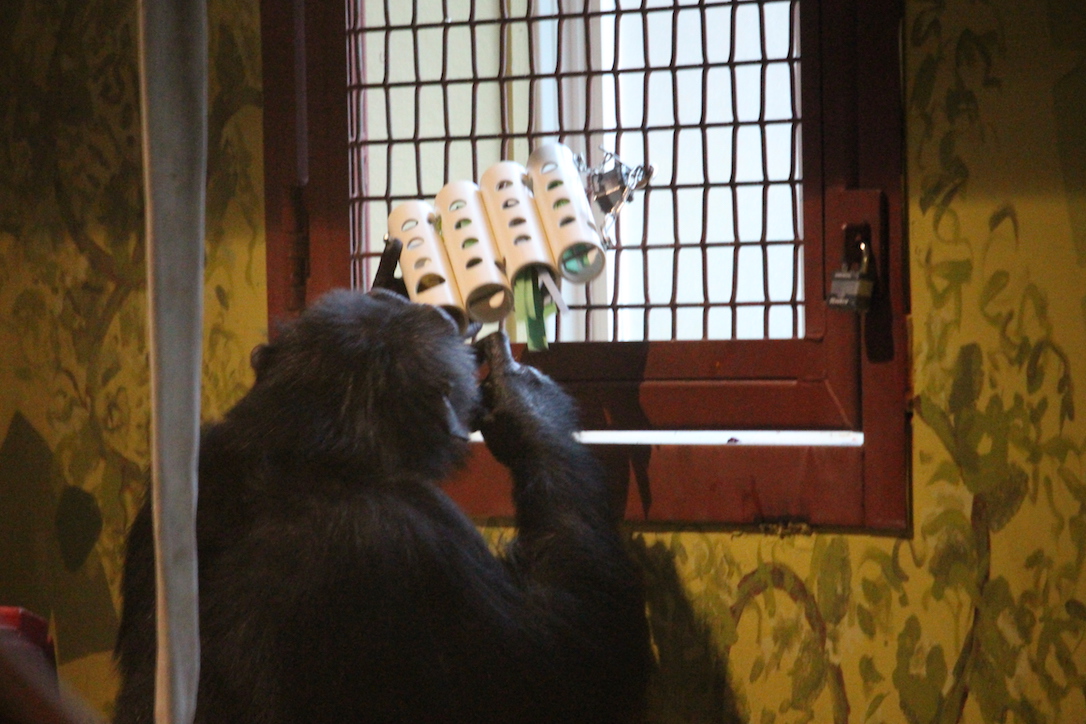
Negra, who is not known to exert extra energy for much of anything, delights in all sorts of food puzzles; in fact it’s a rare evening when she’s not clapping for her caregivers to hurry up with the distribution of the night enrichment. She might prefer the easier enrichment, like peanut butter in between the pages of magazines, but she’ll engage with even the more challenging puzzles before bedding down for the night.
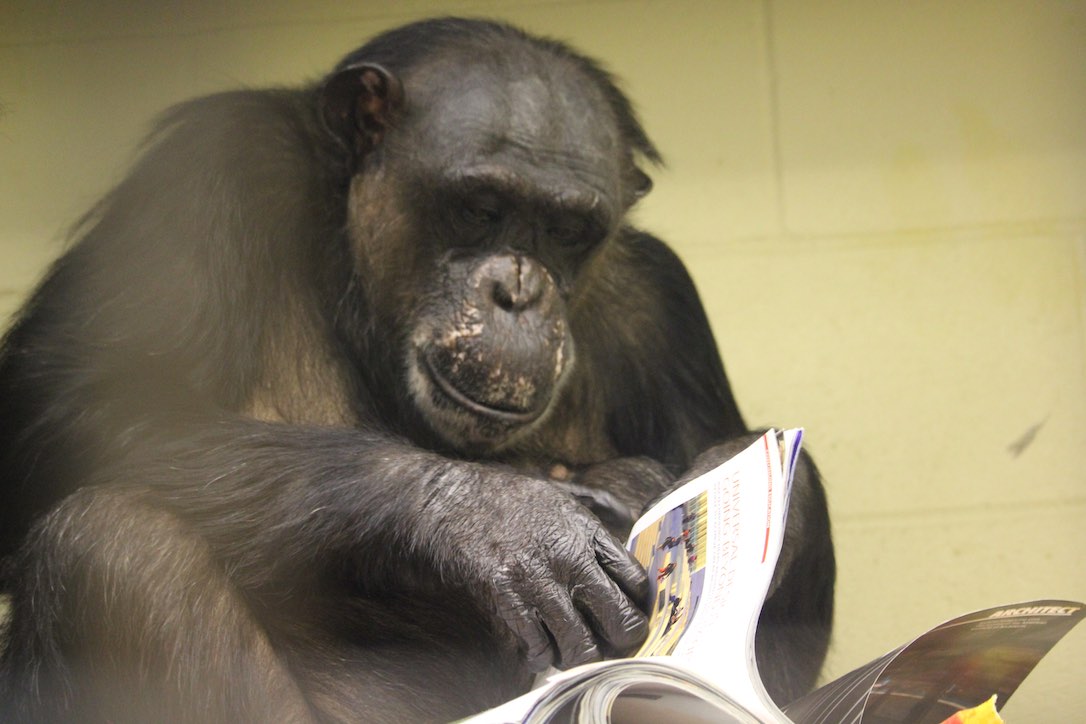
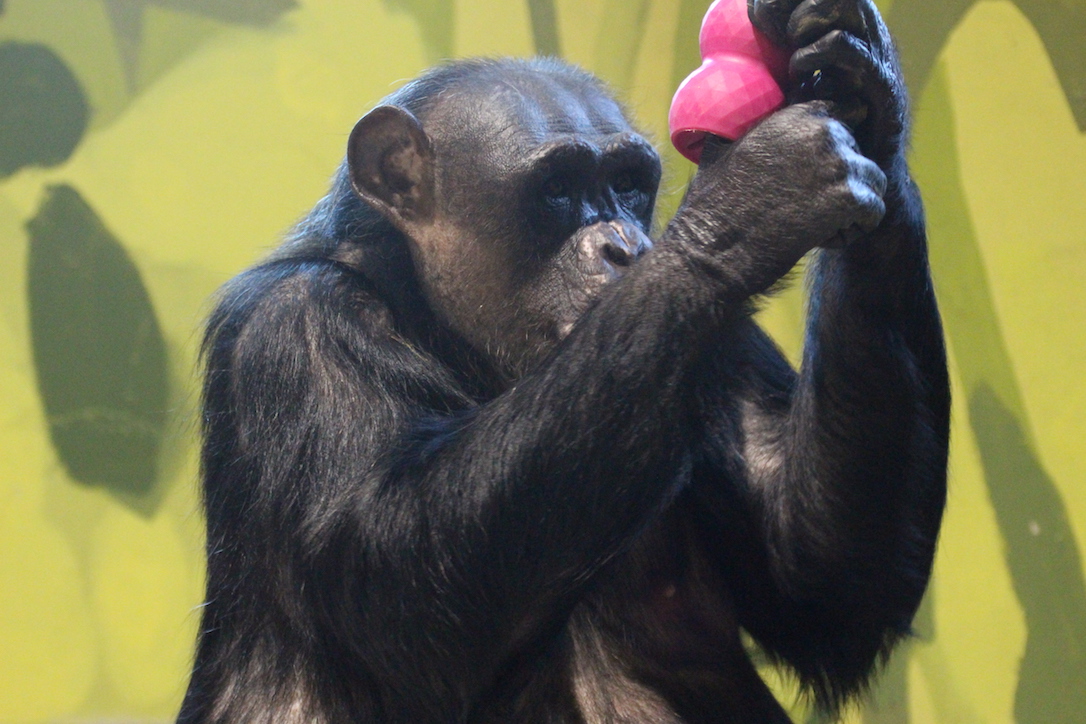
An aside, take a look at our Enrichment Database for examples of the food puzzles as well as the more generalized enrichment we provide.
Boredom is the ever-lurking nemesis for primates in captivity. It can lead to depression and all sorts of strange behaviors. Providing ways for primates to problem solve is one way to keep boredom at bay.
Actually, you could consider forages to be giant food puzzles. When we spread out food, sometimes hiding it, the chimpanzees have to locate and gather their food, and they are in somewhat of a competition with the others in their group. This is an important skill to have and develop when you are a species that must find ripening fruit in the jungle.
Images or videos of chimpanzees in captivity foraging for food, especially if they are outdoors, rarely if ever results in people commenting that it must be frustrating or questioning why we don’t just hand them food (we do that type of serving too). I think it comes back to our superficial, knee-jerk perceptions of animals in captivity. We want to see them in “natural environments”, not necessarily because that’s what they like the most or what’s the most enriching, but because that’s what makes us feel the best.
So, food puzzles hanging on caging just doesn’t sit right with some people. We hear you. We don’t think chimpanzees should be in captivity either, but they are. I wrote a little post called What is Natural a long time ago that addressed something similar.
The thing is, a chimpanzee working on a food puzzle indoors in captivity is a good thing, as long as they also have access to the outdoors, live in a social group, and have a wide variety of other ways to alleviate boredom and do the things they are hardwired to do. It’s as least as natural as a human solving a Sudoku puzzle on their couch.
Here are some photos from today of chimpanzees problem solving:
Foxie with a purpose:
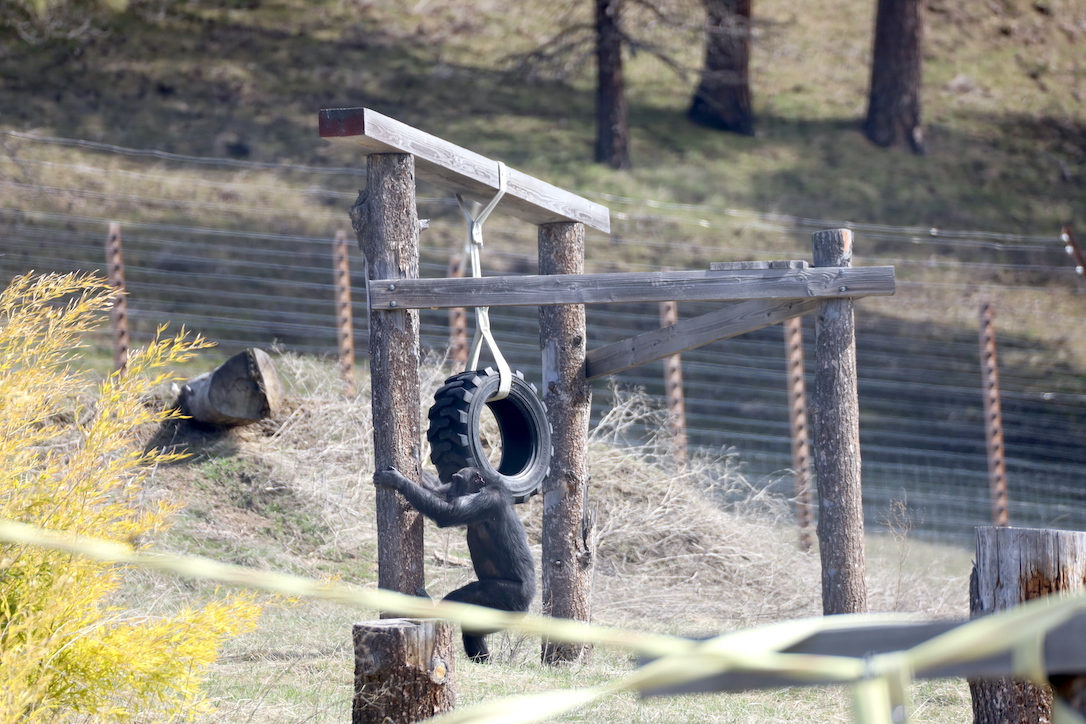
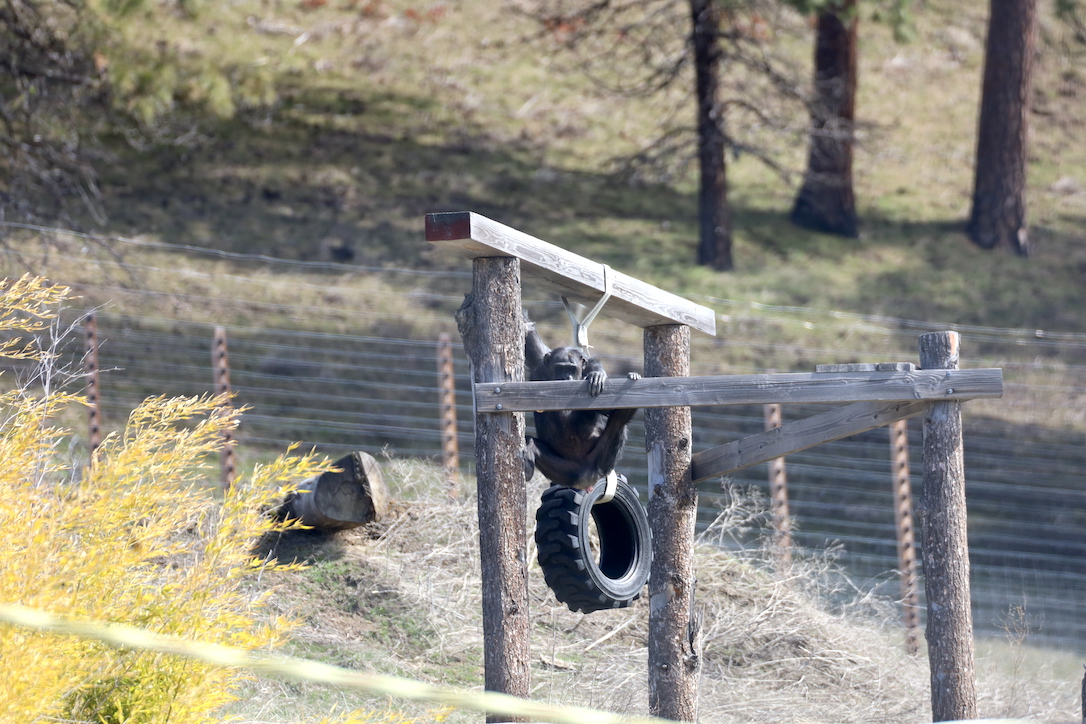
Jody with her forage haul, heading back to the greenhouse:
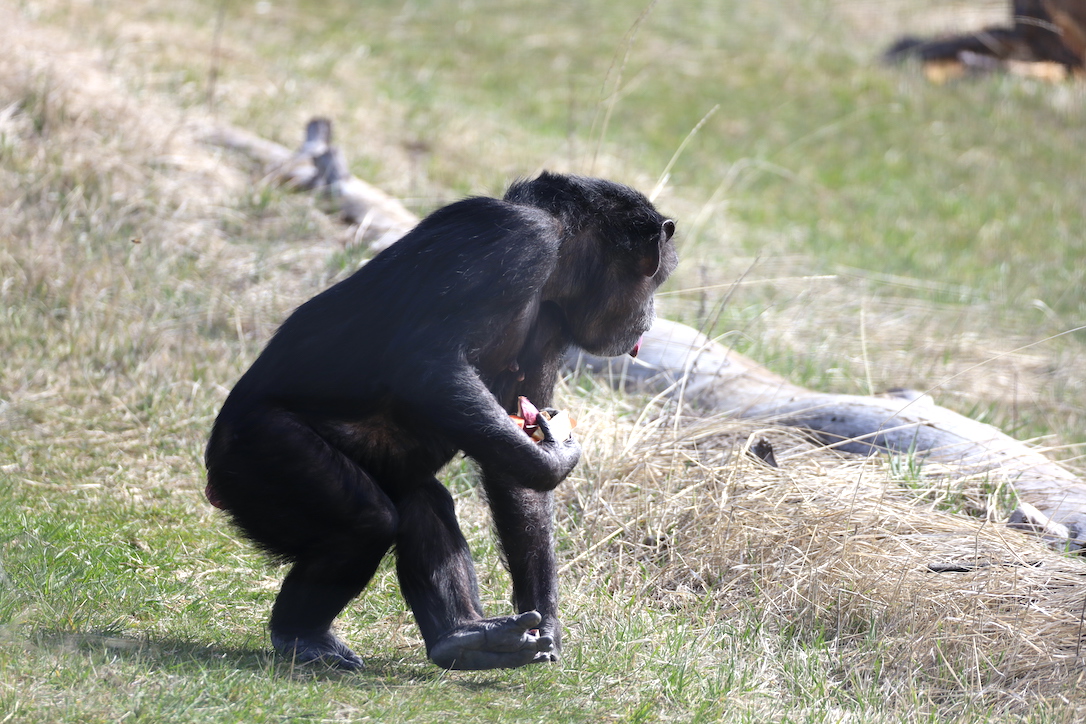

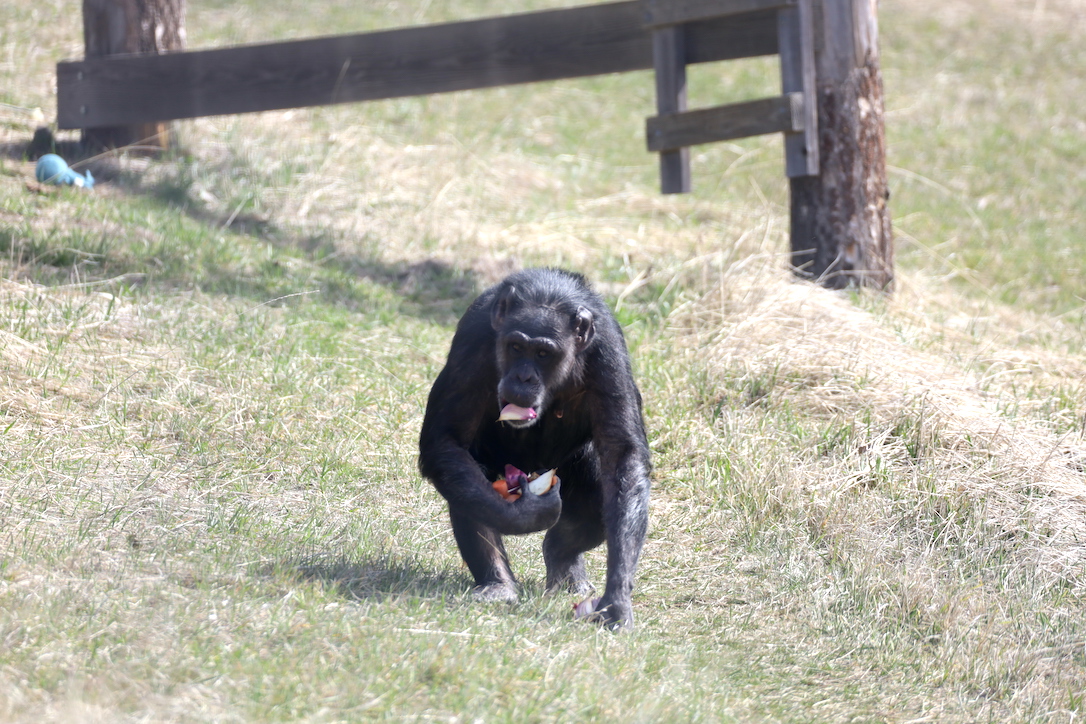
Jody experiencing the sweet rewards of a successful forage:
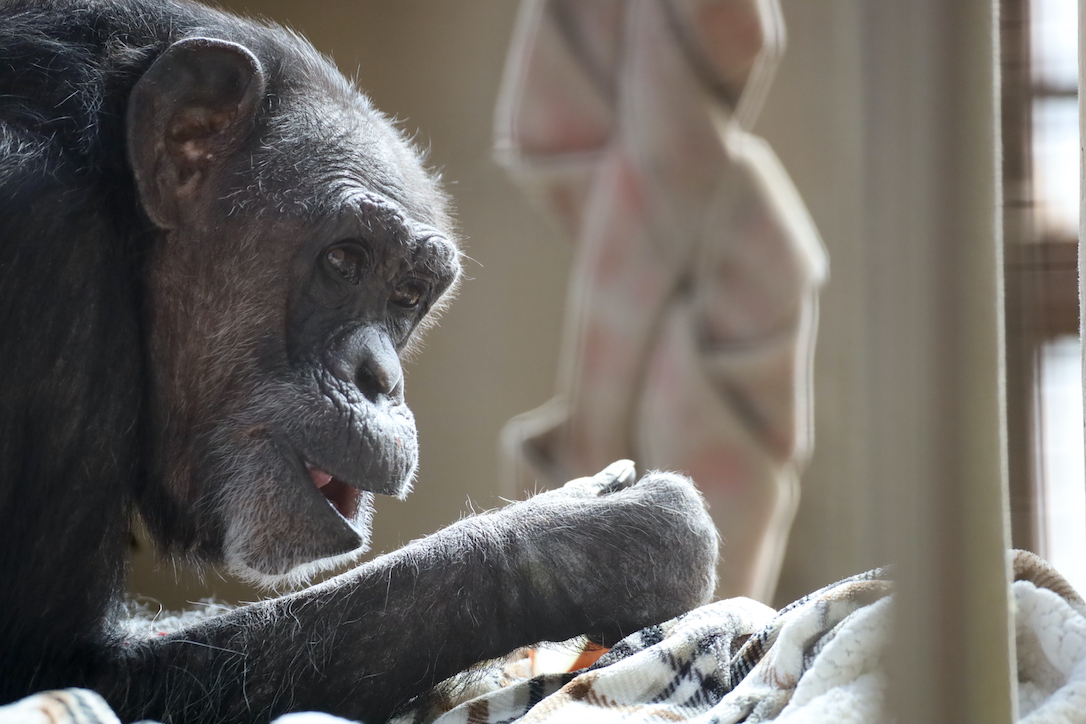
Willy B is still the only one of his group of three who will venture into the open Courtyard. Mave and Honey B are more comfortable inside and in the Chute. We’ll be thinking of ways to help them look at the outdoors differently and are hopeful that their expanded space will help, but, in the meantime, we make sure the spaces they do spend their time in have lots of things for them to do.
The next two photos aren’t great, but they show that we put some lettuce on top of the Chute for Mave and Honey B while Willy B went into the Courtyard to get his lettuce.
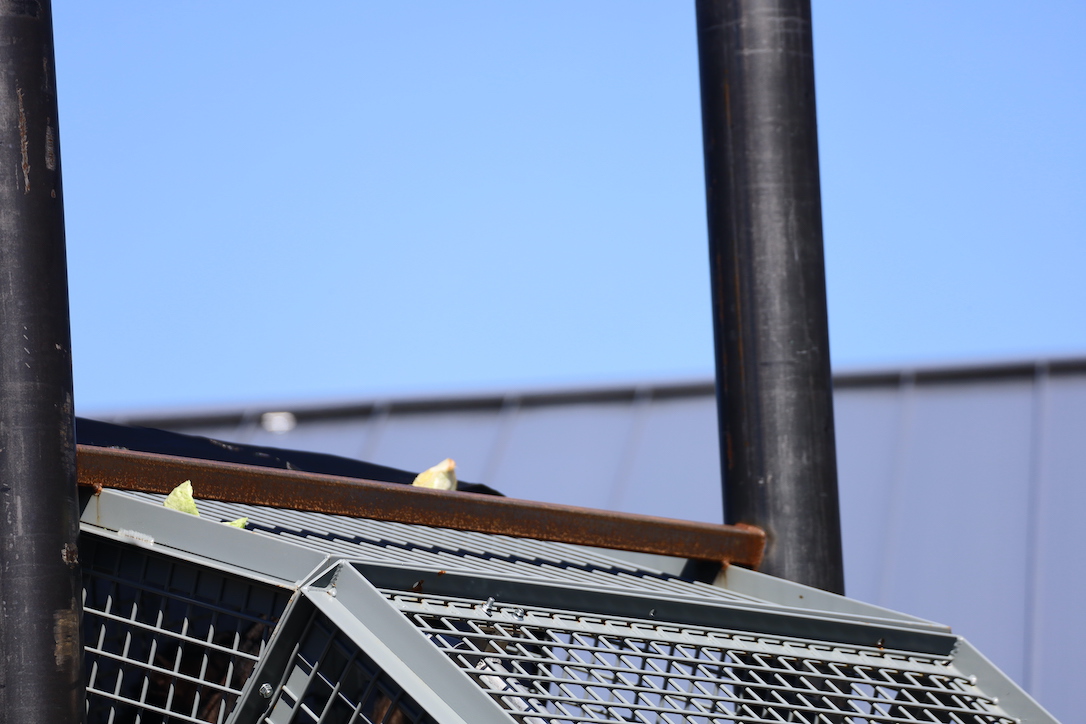
The photo below is of Mave up high in the Chute pulling the lettuce through. She spends a lot of time with this food puzzle, which we’ve just recently introduced:
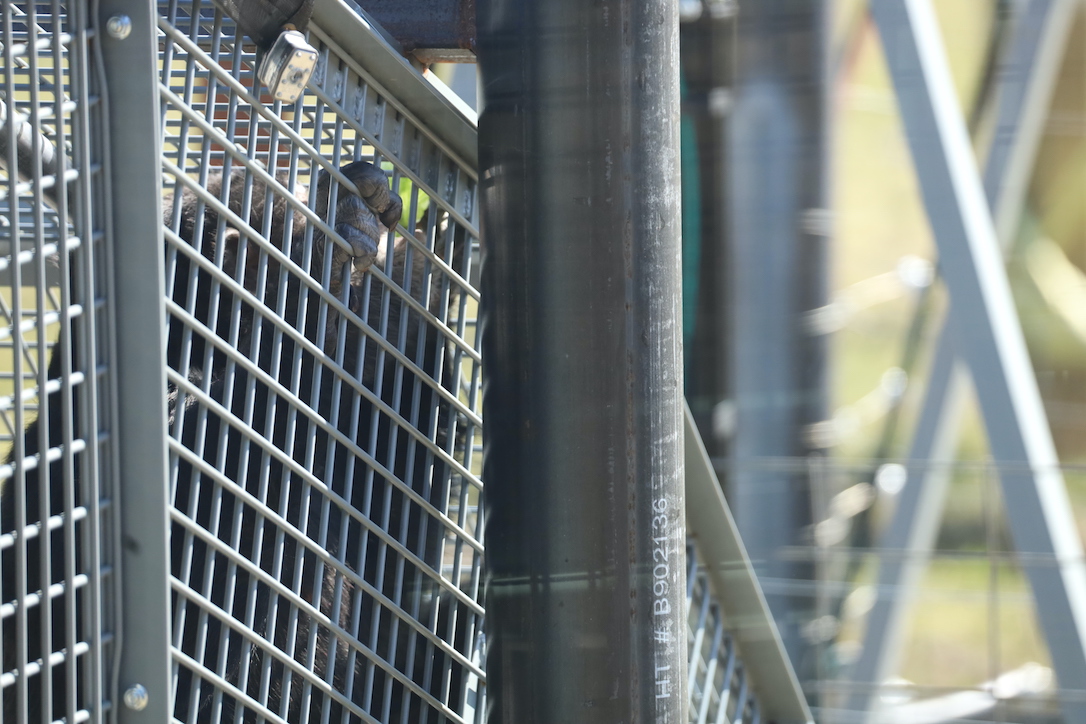
Honey B really likes to “groom” pebbles out of our boots. There’s no food reward, but she clearly gets a lot of satisfaction out of this task.
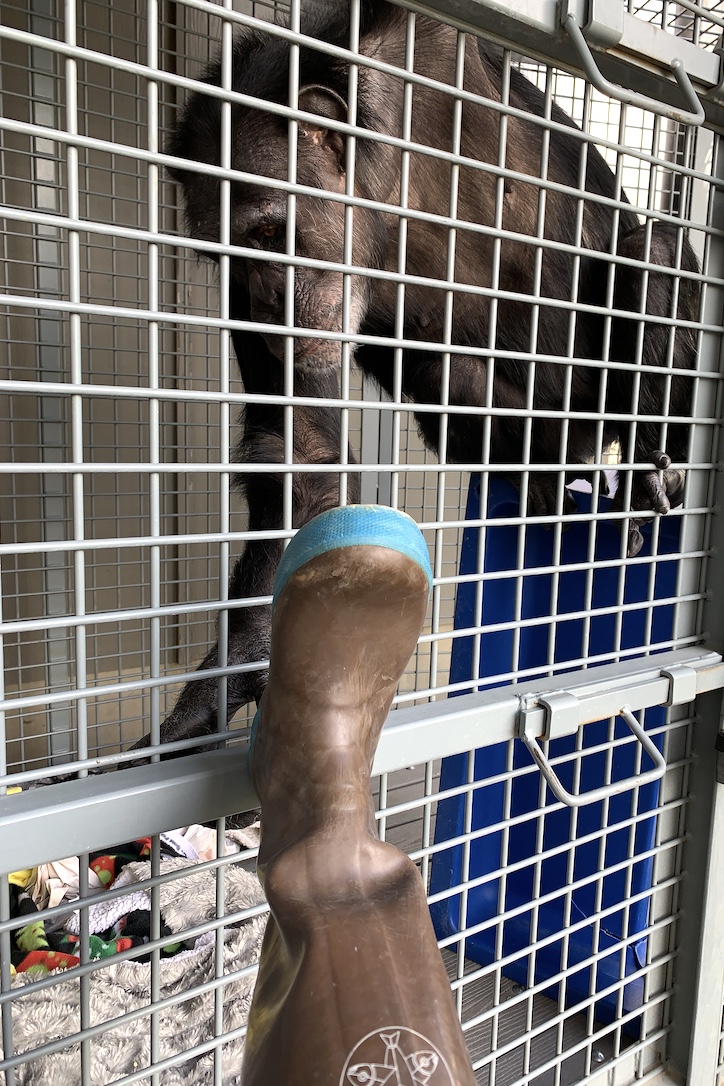
J.B. put lettuce at the top of the structure to entice Willy B to do some extra climbing in the Courtyard.
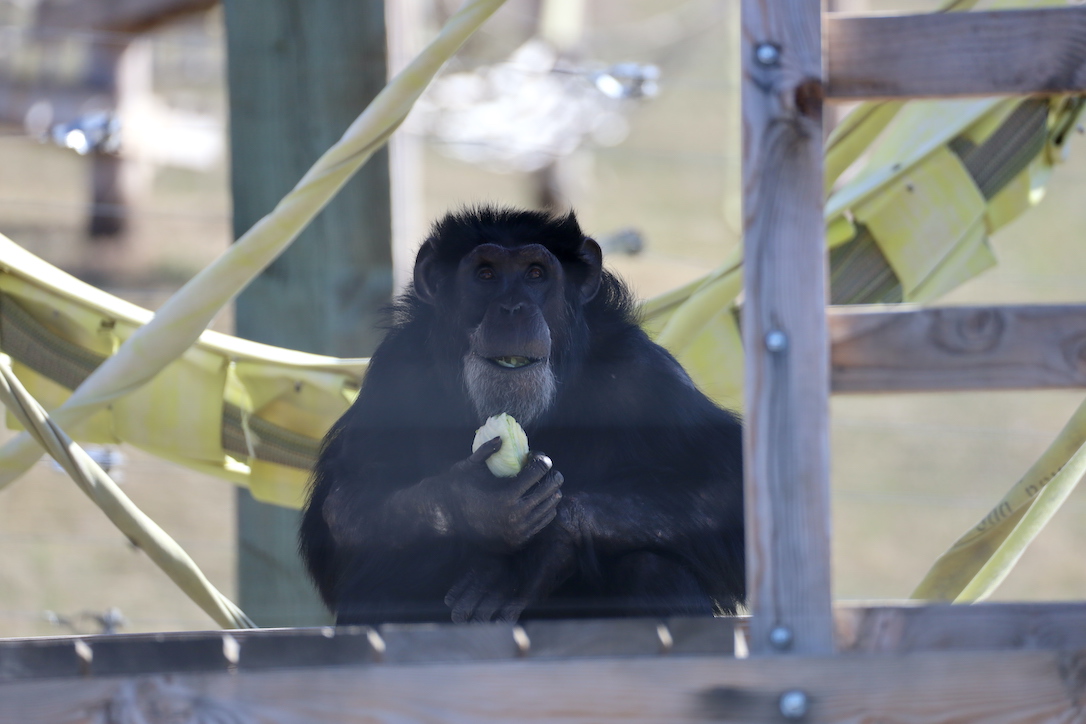
Sometimes it’s fun to watch other people work. Here’s Mave and Honey B watching J.B. painting murals on the other side of the window.
